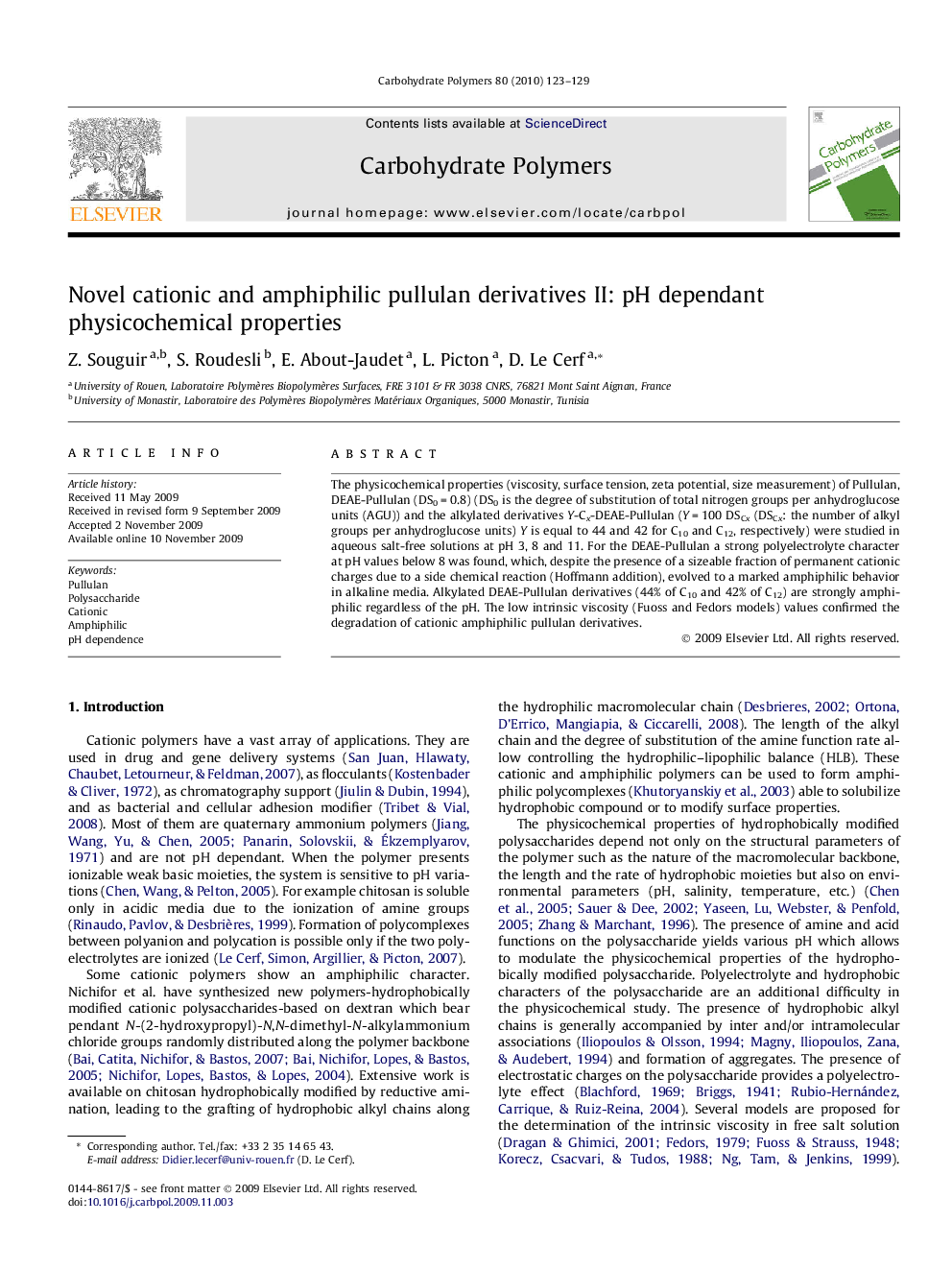| Article ID | Journal | Published Year | Pages | File Type |
|---|---|---|---|---|
| 1385904 | Carbohydrate Polymers | 2010 | 7 Pages |
The physicochemical properties (viscosity, surface tension, zeta potential, size measurement) of Pullulan, DEAE-Pullulan (DS0 = 0.8) (DS0 is the degree of substitution of total nitrogen groups per anhydroglucose units (AGU)) and the alkylated derivatives Y-Cx-DEAE-Pullulan (Y = 100 DSCx (DSCx: the number of alkyl groups per anhydroglucose units) Y is equal to 44 and 42 for C10 and C12, respectively) were studied in aqueous salt-free solutions at pH 3, 8 and 11. For the DEAE-Pullulan a strong polyelectrolyte character at pH values below 8 was found, which, despite the presence of a sizeable fraction of permanent cationic charges due to a side chemical reaction (Hoffmann addition), evolved to a marked amphiphilic behavior in alkaline media. Alkylated DEAE-Pullulan derivatives (44% of C10 and 42% of C12) are strongly amphiphilic regardless of the pH. The low intrinsic viscosity (Fuoss and Fedors models) values confirmed the degradation of cationic amphiphilic pullulan derivatives.
